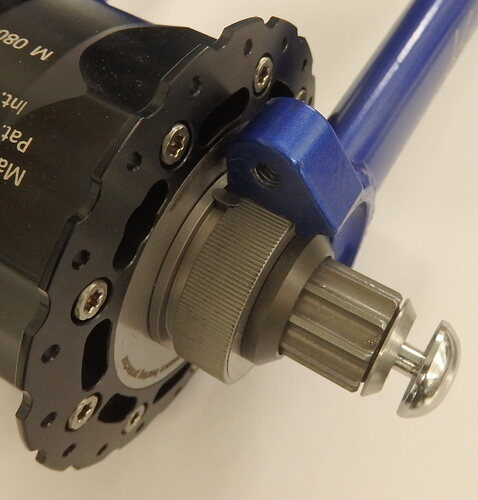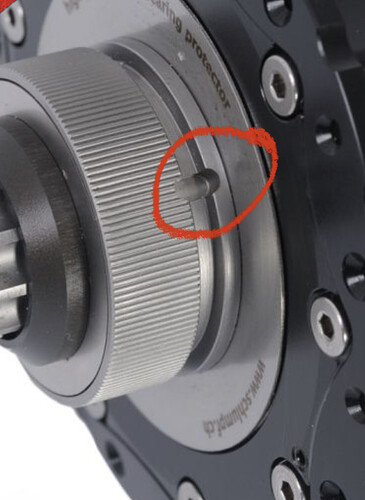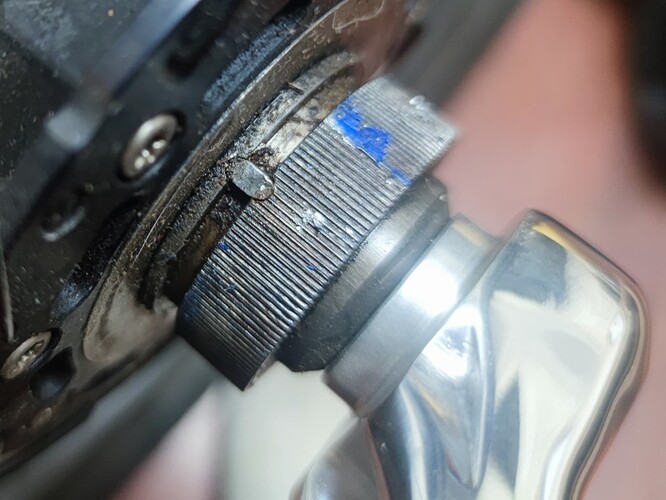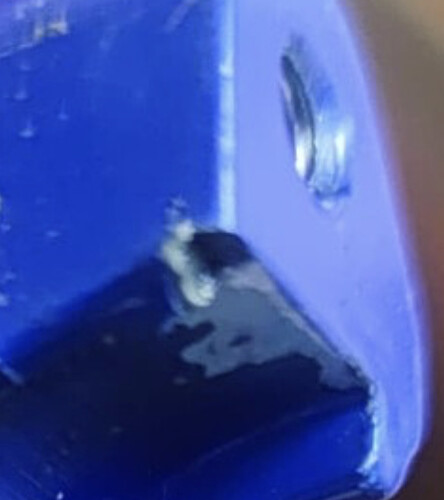I’m not 100% sure, but I guess the explication lies in how the internal mechanism works. I won’t add more details as I’m completely unsure about the exact mechanical issue.
Oh I think I misunderstood Maxence’s comment, he was describing what happens when the bearing slips.
How long will your commute be? Also have you considered going for a brakeless 29"? It would let you swap the wheel a bit easier and with long enough cranks on a Schlumpf you can control your speed. I find with my commuting I learn the riskier spots and don’t go full speed in case I need to slow down or stop quicker and it reduces a lot of accident risk. I run a dual wheel 29" build depending on weather for a 13km commute.
The commute is short, but I do prefer riding it wherever I go in the downtown.
I don’t use the brake much so I don’t see a problem going brakeless, although I’m not planning to switch wheels on the new 29er (the 26er will be a dedicated muni so no need to switch wheels anymore).
The way the Schlumpfs work (or any planetary system) is essentialy down to 3 main parts. The input force (cranks), the output (the tire/rim) and a fixed part (the knurled bearing). When we talk about ‘‘slipping’’, it’s the knurled bearing that is turning, making the input and output parts free in any direction. That only happens when there’s enough force difference between the input and output to make the fixed part compensate for that. And it goes on until the force that makes it slip goes away, then you’re probably down on your feet (or butt).
Frames made of harder material have a tendency to slip, see Titanium and Steel frames. The last and the new generation of Schlumpfs have this issue fixed with an actual stopper versus something based on friction.
Ti frames are sexy, they need to be well built to be worth it though. My old Triton Sponge weights the same as a KH of the same size, and is very stiff and strong (I bought it used in 2010!). A Ti frame that is lighter than an aluminium frame will most likely be more flexy and might not be as good to ride.
It’s only hard to find a builder to make a Ti frame right now (I know I know, I’ll get to it). Other than that, they are beautiful and solid machined when well built ![]()
Thank you very much Jacob, that’s a great ELI5-level explanation!
So it’s all down to increasing the friction between the knurled bearing and the bearing housing. Some potential options:
- Use an aluminum bearing cap instead, which apparently worked for saskatchewanian;
- Make the inside of the bearing housing knurled too, is that possible?
- Weld a small bit on the bottom of the bearing, drill a hole correspondingly on the bearing cap to lock that bit, so to implement a mechanical stopper like the latest generation. Is this possible?
- Overtighten the bearing cap, to more than the suggested 5-6 Nm. I know this is possibly the worst idea, as the user manual explicitly stated that it will damage the bearing and ruin the warranty - but, just asking scaredly in a whisper, what makes the Schlumpf’s bearing special that it get damaged in such a case? Because I have bearings on normal hubs overtightened to, like 10Nm or so (not actually measured), it only makes the wheel less smooth.
BTW the kind guy who makes the titanium frame offered to lend his own frame to me to have a test before I decide whether or not to order one. What would be the best practise to try to reproduce this issue? Like doing abrupt start and stops on high gear?
The main issue is that you are not potentially damaging an easily replaceable bearing as on a standard hub, you are potentially damaging the torque brace part of the hub (the part with the knurled surface). Even if that part is fine, the bearing inside it is a lot harder to replace than the normal unicycle bearings (or even the bearing on the other side of the Schlumpf hub.)
I’m not sure if it is actually more fragile than a regular hubs bearing, but while on a normal hub it’s not a big deal if it wears out prematurely if you overtighten it, on this it is.
I wouldn’t weld on it, but I know @jaco_flans has retrofitted the previous generations “mechanical locking system”, by milling slots into the torque brace. It seems possible to do this with this new system too, drilling (and probably reaming) a hole into it and fitting a dowel with a nice press fit.
I may be wrong but I thought this version actually had an improvement on the knurling system.
It was this little block or tab that slotted in the bearing cap edge of KH frames (and perhaps others)
https://krisholm.com/en/blog/new-kh-schlumpf-geared-hub-now-available
My comments here carry my own personal bias. But I’d steer clear of using Ti for the frame and go with either a KH frame that has the double brake tabs - not sure they’re yet available in 29er though, or get one from Flansberrium.
Why? These are going to be in my view the best fit for the special system pictured above so the slipping issue is resolved.
Next - even though I’ve not yet personally tired it, if I was rebuilding my older hub into a new 29” wheel with carbon rim I’d get hold of the BrakeFast adapter in 36h and build the disc system on the inboard.
Yes there will be some issues to resolve getting this to fit and work, so it does require some DIY skills. But it is a massive upgrade and the disc being put on the hub also takes away much of the risks of slipping knurling anyway.
Roger’s video is super clear on how to set this system up and would just require care and attention and some patience.
The cost of this part and the time invested in my view massively outweighs a Ti frame.
I would probably enjoy a Ti 36er frame for a fixed geared carbon ride, but for Schlumpfs I really like the KH frames for the best bearing fit. Others surely work but I just like the KH (or Flansberrium) route.
Again it’s all coming from my bias towards these components but when you’re planning to build a new carbon wheel up, using the BrakeFast system just feels like a best route - as it kind of also adds some protection to your hubs flanges… and you get a neat disc brake system akin to the new hubs ![]()
![]()
Indeed! I never noticed the little block before but it is there. This makes things much easier, so as long as I have those slots on the bearing housing I’m all good right?
And we can see the knurled part has already slipped, maybe it’s because I didn’t align the nubs with the slots while installing.
Edit: the more I stare at those three slots the more suspicious they become. The images @mindbalance linked shows the nubs are stopped at the edge of the bearing housing, not in any of these slots - did I just accidentally pressed them out with the nubs misaligned? But they seem so evenly spaced and symmetrical…
They look like squished frame to me - and if so the knurled bearing won’t have been held so well when positioned like that, and may have been prone to slipping. My hub is the generation before yours and doesn’t have that catch on it
I think you may have done so. I’ve never physically handled this kind of hub so I can’t say I know how it feels to align that nub.
The good news is. If you were to move this to a new frame for 29” wheel, then it would be possible to align it correctly with the nub positioned as per the photos above. My only thought is again this would need to be using bearing mounts / caps as per the KH design as I feel they have the tolerances that grab the corner of that nub and help lock the bearing in place.
I’d also pay close attention to the text on the bearing that should say: UP. And ensure that is facing up, into the fork / frame leg.
As for how you can fix this now with this frame. If you can get the nub closing positioned to where it looks (as best it can) in that photo and then swap your bearing caps around - they could be interchangeable - there’s a chance that the other cap has a firmer edge / corner to catch it.
This is the puzzling point. I could perhaps just be chance or maybe the former owner tried different locations.
Regrettably I suspect to use this with 100% original grip if not moving to a new wheel build, it would be a case of getting a new frame.
Edit: looking and thinking again -
These edge indents might in fact be how it is designed to push into the frame. The photos I shared before don’t show how it looks with the caps installed, but the nub looks pretty chunky so my guess is they are squashed into the frame / cap when first mounted as KH caps are pretty snug when tightened down as they should. So… it may just be a case of putting that nub in the correct edge space and ensuring your cap aligns or is able to squash afresh into it and… GRIP!
Looking forward to seeing what you build up ![]()
Just to quote from the KH site:
4) Greater security against slippage of the knurled bearing.
There is now a physical block (small protruding nub) on the bearing that prevents possible slippage of the knurled bearing side in the bearing housing. This requires that the bottom half of the inside edge of the bearing housing does not have a lip. All KH frames produced since 2012 are compatible. Minor modification may be required for other frame bearing housings.
To be clear my understanding is these nubs have to go on the edge as per the photo and then the caps clamp down and grip and squish then into the frame corner and cap. There shouldn’t be any notch else where.
Yes, your understanding is right (or at least my understanding of what you said ![]() ) the nub is keyed into the notch in the lip of the bearing housing.
) the nub is keyed into the notch in the lip of the bearing housing.
From your photo it looks like you had the nub about 90 deg rotated from where it was supposed to be at one point which has caused the indent beside the weld, likewise there looks to be another indent about 10 deg round from the split in the bearing housing. The paint in the knurl is probably caused by the top-cap not seating properly given the bearing wasn’t sitting right rather than slippage – that would be my guess anyway.
It should be fine once you put the bearing in with the correct orientation, if need be you can clean the notch up a little with a file.
Thanks folks! That’s a huge problem solved!
I tried to find a picture of a KH frame with those edge notches but failed. Anyways I tend to believe those indents in the middle are caused by the mispositioned nubs. The curious distribution of them might be because there are some positions the bearing is more “comfortable” to sit on, despite still being wrong positions.
I reinstalled the wheel to put the nubs into the edge notches. Interestingly, the nubs do not both sit in the notches at the same time, there is like a 5 degrees freedom for the bearing to rotate, until a nub is stopped by a notch.
Oh I must give it a check! Any idea why this is important? The hub design does not seem quite fool proofing…
By the way I’ll definitely look into the brakefast mechanism, it looks promising. But since I still haven’t gave up the thoughts of employing a titanium frame, which might be prone to disc rubs, plus I don’t actually use brakes on the road quite often (but I do appreciate them while muni-ing), I might go brakeless on this build.
No idea at all, and I agree it isn’t fool proof. This is probably why I’ve overly scrutinised the photos and posts and tried to absorb as much as possible so that its logic calmly sits in my mind. I think the UP position may simple be a way to ensure that the two nubs are at 3 and 9 o’clock and resting on the edges of the bearing mounts’ lips.
This might be down to how they’ve been installed before or from a slip… not sure, but my gut says in a fresh frame, you’d have hard metal to engage with and there’d be no play or degree of moment possible.
Perhaps you can find a small chunk of aluminium that you could cut to fill the gap and glue in place?
That’s if you stay with the same frame. New frame = no issues!
Going brakeless on unicycles probably should be more often promoted as while I obsess over all of this, my actual skill of using a brake is minimal at best.
Is it just me and my uni OCD that feels a unicycle doesn’t look complete without a brake?!? ![]()
However if you did invest the effort and money into a BrakeFast set up, there’s no requirement to run a brake straightaway. I just wonder if there’d come the day when you really wish you had it, and then rebuilding again would be a royal pain!
Just a thought ![]()
Going with brake on unicycles probably should be more often promoted ![]()
Honestly, I find you fool to ride a geared uni without a brake. IMHO, you give up a lot of responsiveness, some speed and a lot of fun. I consider the brake as a must-have. In particular, an inboard brake. Even if you don’t feel comfy with a brake, you should mount one so that you can train and get confident with it. Once you’ll be confident, you won’t be able to ride without it! ![]()
I’m thinking brakeless because I find myself spending way more time tuning the brake rather than using it. My OCD is the disc must not rub. From the information I’ve collected, this could be a nightmare on a titanium frame - or not, may be I’ll give it a try. Then again since there is still the disc mount on the crank, I might still want to install the brake!
It’s true I need to practice using a brake, and I’m doing it - with my muni. Until I’m confident with one, I’m more of using anticipation and precaution to keep me and my surroundings safe. Yes most of the time I ride rather slow, slow enough to make a Schlumpf unworthy, and only faster when I’m 100% sure it’s safe to do so. Also considering I’m mostly riding in a plain city, I think brake is much less than a must in my case. Then again, I might still install one. Or not. Just thinking…
That’s a common argument I 100% disagree with. ![]()
IMHO, city riding is one of the most important use cases for a brake. It helps stop at traffic lights and stop signs and decelerate faster when there’s any danger. Of course, you’ll steed have to anticipate and be cautious, but that’s a powerful safety equipment I wouldn’t ignore.
It’s just too scary for me to use a brake on a flat road - again, need practice!
Sure. I tend to be in the “I’m an experienced rider” point of view, so what I say may apply when you’re sufficiently trained (clipless goes brrrr) ![]()






